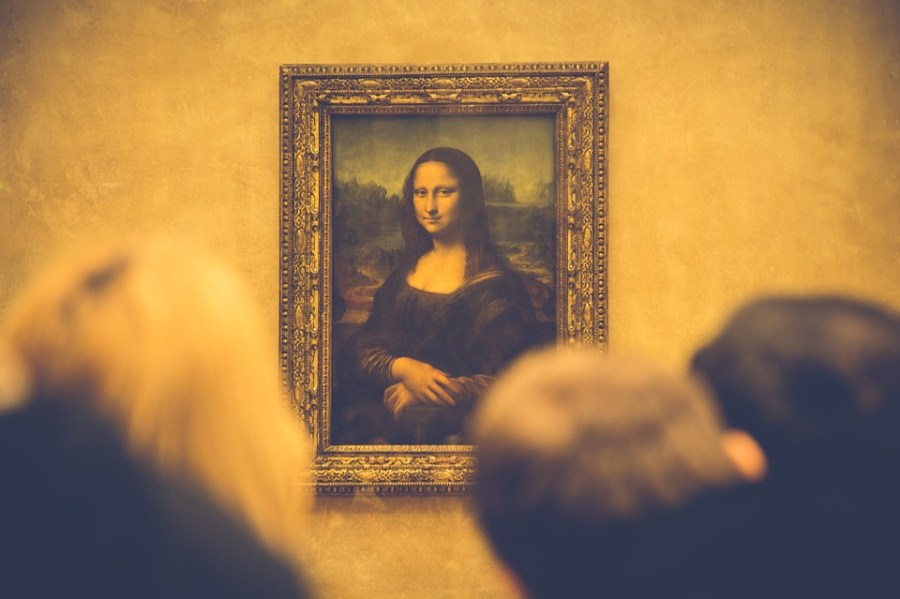Principles of Radiographic Imaging an Art and a Science Workbook

Whether y'all consider it an investment, a hobby or just a cool way to decorate the walls in your home, acquiring new fine art tin be a fun and exhilarating feel. Although many people assume collecting art is only for millionaires, the truth is you tin can start your own art drove on any budget. You may non take the funds to fill it with famous pieces, but all that matters is that you fill up it with pieces you lot dearest.
Know What You lot Like
Starting time, simply collect what you like, fifty-fifty if information technology's something obscure that others may not capeesh or understand. Unless y'all're just trying to make a quick buck — and that's often hard to do — putting together a drove won't be fun if you force yourself to choose items simply because they're trendy. If you aren't sure what yous love, go to the library and check out some art history books. Go to art galleries in your community, and check out the artisan booths at local fairs and festivals. Do a elementary internet search, visit an antique shop or flip through the art at your local craft store or large box store. Figure out what appeals to you, and use that as a starting point.
Know Where to Look
The next pace is knowing where to find the art you like. Some of the places you visit to discover your gustatory modality may too sell the types of pieces you like. Craft fairs, festivals, antique shops and galleries are proficient examples, but you tin shop for art at many other places, including estate sales, where you lot may find rare and unique pieces, and art websites like Etsy, ArtStar, Uprise Art and Editioned Art. Some artists permit you to visit their studios, and sale houses typically take art in their inventories. If y'all become to auctions outside of major cities, you may even notice a rare piece at an excellent price.
Do Your Homework
Before yous make a buy, especially an expensive buy, you want to practice your homework on the artist, the item and its background before signing on the dotted line. In some cases, the seller may not realize the value of an particular and sell it for a bargain price, merely you don't want to pay as well much for a piece, even if you love information technology. You lot likewise want to avoid buying something advertised equally an authentic piece that is actually just a reproduction. Exist on the lookout for fraudulent items, and acquire how to read the documentation that verifies the authenticity and provenance of a piece of art.
Have Information technology Dull
If yous know your budget for starting an fine art collection, don't rush out and spend it all in one twenty-four hour period. Don't expect to put together a huge, envious collection overnight. It takes time to curate the perfect collection for your interests, tastes and passions. For many art collectors, the hobby becomes a lifelong journey. You never know when a new creative person you discover turns into a huge success, making that $100 painting y'all bought worth a pocket-size fortune — and bragging rights — one twenty-four hour period. Starting slow also allows you to salve up for the more expensive pieces y'all may want to buy i 24-hour interval.
Treat Your Art Well
Finally, afterward you purchase your first pieces, make certain y'all have intendance of them. Larn how to brandish and preserve everything you lot buy, and make certain you have plenty of space to go on your fine art. Sure, you could hire a storage building if you don't have enough room in your home for all your treasures, just what'due south the betoken in having an awesome collection if you lot tin can't show it off? If y'all acquire expensive pieces, insure them against theft and disasters. You may also desire to brand a programme for what happens to your art after you pass away. If y'all don't take family, y'all may want to donate fine art to a museum or clemency, for example.
Source: https://www.questionsanswered.net/article/how-to-start-an-art-collection?utm_content=params%3Ao%3D740012%26ad%3DdirN%26qo%3DserpIndex
0 Response to "Principles of Radiographic Imaging an Art and a Science Workbook"
Post a Comment